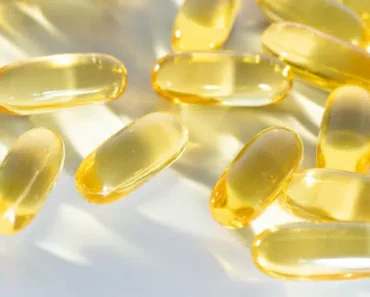When most people think of pine cones, they picture brown, woody cones scattered on forest floors – the symbol of winter walks, holiday decorations, or bird-feeder crafts.
But few realize that the real treasure of the pine tree isn’t the dry cone that falls to the ground – it’s the young green pine cone, harvested before it matures.
Modern studies are beginning to confirm what folk healers always knew: green pine cones are a natural powerhouse of antioxidants, vitamin C, and anti-inflammatory compounds that support the respiratory system, detoxify the body, and even protect the heart and brain.
What Exactly Are Green Pine Cones?
Green pine cones are the immature, unripe stage of a pine cone, harvested when they are still soft, sticky, and filled with resin.
At this stage, the cone hasn’t yet opened to release its seeds. Instead, it’s rich in natural plant compounds – resins, essential oils, flavonoids, and tannins – all concentrated in the cone’s core and sap.
Their sticky resin contains the same healing oils found in pine needles – mainly pinene, limonene, and borneol – substances known for their strong antibacterial, antiviral, and expectorant properties.
Why Green Pine Cones Are So Powerful
The potency of green pine cones lies in their chemistry. Researchers and herbalists have found that they contain:
- Antioxidants – especially flavonoids and phenolic acids that protect cells from oxidative stress.
- Vitamin C and natural terpenes – boosting immunity and fighting inflammation.
- Tannins – natural plant astringents that purify and protect tissues.
- Essential oils (alpha-pinene, beta-pinene, limonene) – known for antimicrobial and respiratory-cleansing properties.
- Resins – compounds that act as natural antibiotics and detoxifiers.
These elements combine to create a powerful natural remedy that supports multiple systems in the body -especially the lungs, liver, heart, and immune system.
1. A Natural Respiratory Healer
For generations, green pine cones have been one of the most trusted home remedies for coughs, colds, bronchitis, and sinus congestion.
Their resinous compounds act as natural expectorants, helping to loosen mucus and clear airways. Drinking pine cone tea or syrup soothes sore throats, reduces inflammation in the lungs, and eases breathing.
In traditional Russian and Balkan medicine, green pine cones are often boiled with honey or sugar to make pine cone syrup – a deep amber, forest-scented tonic taken by the spoonful during flu season.
Many people describe it as nature’s “cough syrup” – powerful, soothing, and 100% natural.
2. Strengthens the Immune System
Green pine cones are also prized for their immunity-boosting properties.
Thanks to their high content of vitamin C, flavonoids, and antioxidants, they help the body fight off infections and recover faster from illness.
Drinking a small dose of pine cone syrup or tea during the colder months helps support your immune defenses, especially when combined with honey, ginger, or lemon.
3. Powerful Anti-Inflammatory Properties
The resins and essential oils in green pine cones act as natural anti-inflammatories.
Compounds like pinene and borneol help reduce swelling, pain, and stiffness in muscles and joints. In traditional medicine, pine cone infusions were applied topically to relieve arthritis, gout, and rheumatism.
Even inhaling steam from boiled pine cones or pine needles can help open the sinuses and ease inflammatory conditions in the airways.
4. Natural Detoxifier and Liver Support
Few know that green pine cones have detoxifying effects on the liver and blood.
Their tannins and antioxidants help neutralize toxins and support the liver’s cleansing functions.
Herbalists in Eastern Europe often recommend pine cone syrup or tinctures as part of gentle seasonal detoxes, especially after winter when the body feels sluggish.
Drinking pine cone tea regularly can improve circulation, reduce fatigue, and promote a feeling of lightness and renewed energy.
5. Supports Heart and Brain Health
Recent research has explored pine extracts for their neuroprotective and cardiovascular benefits.
The same antioxidants that defend plants from harsh weather protect human cells from oxidative stress – one of the leading causes of aging, heart disease, and cognitive decline.
Green pine cones, especially when turned into syrup or infused oil, may help improve blood circulation and reduce LDL cholesterol, keeping the cardiovascular system strong.
6. A Natural Source of Energy and Vitality
The combination of resins, vitamin C, and aromatic oils makes pine cones excellent for boosting energy and reducing fatigue.
Their scent alone is refreshing – inhaling the aroma of boiling pine cones stimulates the respiratory system and clears the mind.
In many folk traditions, pine was considered a symbol of longevity and strength, believed to revitalize the body and sharpen focus.
7. Healing for Skin and Wounds
Pine resin has long been used as a natural antiseptic balm. When extracted from young cones and mixed with oils or waxes, it helps heal minor cuts, burns, and insect bites.
The resin forms a protective layer that keeps wounds clean while promoting tissue regeneration – similar to how the tree heals itself after injury.
A simple homemade pine cone salve can be made by infusing crushed green cones or pine resin in olive or coconut oil, then mixing with beeswax.
8. Relieves Stress and Clears the Mind
The fresh, forest scent of pine essential oil has proven calming and cleansing effects on the nervous system.
Simply boiling green cones in water and inhaling the steam can reduce stress and mental fatigue. The crisp aroma purifies indoor air, making it ideal for relaxation or meditation.
In aromatherapy, pine is known to help lift mood and reduce mental fog – connecting you back to nature’s grounding energy.
9. Supports Oral Health
In folk remedies, pine cone infusions were sometimes used as a mouth rinse to strengthen gums and freshen breath.
The natural tannins and antimicrobial compounds kill odor-causing bacteria and soothe inflammation, making it an effective, chemical-free alternative to commercial mouthwash.
How to Harvest Green Pine Cones Safely
If you’re lucky enough to live near pine forests, you can collect your own green pine cones.
Here’s how to do it properly:
- Timing: Harvest in late spring to early summer (usually May–June), when cones are still small, soft, and green.
- Size: Choose cones about 2–4 cm long – easy to cut with a knife or nail.
- Safety: Always collect from unpolluted areas – away from roads or industrial zones.
- Identification: Make sure you’re picking from true pines (e.g., Scots pine, white pine, or red pine). Avoid ornamental species unless verified as safe.
- Storage: Use fresh within a few days or dry them slightly for later infusions.
Traditional Ways to Use Green Pine Cones
Once harvested, there are many ways to preserve and use the healing power of green pine cones.
1. Pine Cone Syrup
This is the most popular preparation – sweet, aromatic, and medicinal.
You’ll need:
- 10–12 green pine cones (washed)
- 2 cups sugar or raw honey
- 2 cups water
Instructions:
- Cut cones into halves or quarters.
- In a saucepan, combine with sugar and water.
- Simmer gently for 1–1.5 hours until the mixture thickens.
- Strain and store in sterilized glass jars.
Take 1 teaspoon daily during cold and flu season, or add to tea for respiratory support.
2. Pine Cone Tincture
A tincture extracts the medicinal compounds into alcohol or glycerin.
You’ll need:
- 10 small green cones
- 1 cup vodka or 40% alcohol
Directions:
- Chop the cones and place them in a jar.
- Cover with alcohol and seal tightly.
- Store in a dark place for 2–3 weeks, shaking occasionally.
- Strain and keep in amber bottles.
Take a few drops diluted in water to boost immunity or stimulate circulation.
3. Pine Cone Tea
Simple and soothing, this tea has a pleasant forest aroma and mild sweetness.
Method:
- Crush 2–3 small cones.
- Boil in 2 cups of water for 15–20 minutes.
- Strain, add honey or lemon, and enjoy warm.
Perfect for clearing lungs and easing coughs.
4. Pine Cone Oil or Balm
Infuse chopped green cones in olive or sunflower oil for 4–6 weeks in a sunny window. Strain and use as a chest rub for colds, or mix with beeswax for a healing salve.
Scientific Interest in Pine Cone Extracts
Modern research has started validating traditional uses of pine cones and needles. Studies have shown that pine extracts may:
- Reduce oxidative stress and inflammation in the body.
- Enhance respiratory function by acting as a mild bronchodilator.
- Support brain health by improving blood flow and antioxidant defense.
- Show antibacterial activity against common pathogens.
While more research is needed, these findings align closely with what natural healers have observed for centuries.
Precautions and Safety Tips
Green pine cones are natural, but concentrated – always use them carefully.
- Avoid during pregnancy or breastfeeding, as strong resins may be stimulating.
- People with kidney disease or allergies to pine resin should consult a doctor before use.
- Always identify your pine species correctly – some ornamentals (like yew) are toxic.
- For internal use, small amounts (as in syrup or tea) are sufficient. Overuse can cause stomach upset.
When used responsibly, green pine cones are gentle yet highly effective natural remedies.
How to Incorporate Green Pine Cones Into Daily Life
You don’t need to be a herbalist to enjoy their benefits. Here are some easy ideas:
- Add a teaspoon of pine syrup to warm tea or lemon water.
- Use pine-infused oil as a chest rub during colds.
- Lightly scent your home by boiling a few cones in water on the stove.
- Make a pine cone bath soak by adding crushed cones to hot bathwater for a spa-like aroma.
- Keep a jar of pine syrup in your pantry as an all-natural cough remedy or immune tonic.
It’s easy to overlook something so ordinary as a pine cone, yet it contains the concentrated life force of one of the Earth’s oldest and most resilient trees.






